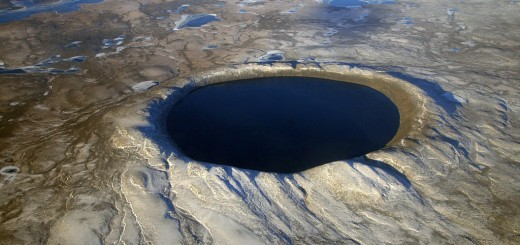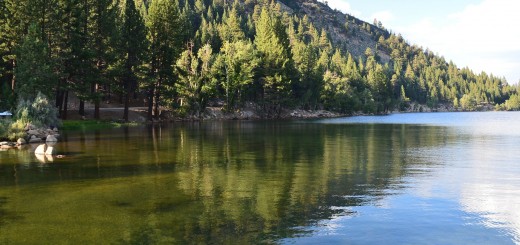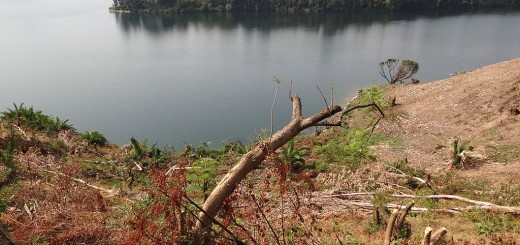Mystery Of Crowley Lake Columns Solved
5After California’s Crowley Lake reservoir was completed in 1941, strange column-like formations were spotted on the water body’s eastern shore. The rising gray and stony cylinders have cracks ringing around them at intervals of about 1 foot and have inspired comparisons to Moorish temples.
With those sort of descriptions out there, it’s not surprising that theories on the origins of the columns have been similarly wide-ranging. Some believed they were just portions of rock that, as luck would have it, were eroded away to form the perfect, rising spirals and arches. Others believed the columns had a connection to the area’s volcanic past.

Crowley Lake columns. (Credit: Sierra Adventure Center)
To get at these questions, geologists at the University of California, Berkeley, set out to investigate. Using a slew of different methods and equipment, including X-ray analysis and electronic microscopes, applied to samples of the columns, the researchers have found there are tiny spaces throughout them.
These are cemented into place by minerals that are resistant to erosion, and appear to be related to a large volcanic explosion that took place about 760,000 years ago. Scientists say that the blast was more than 2,000 times larger than that of the eruption of Mount Saint Helens, and created the Long Valley Caldera that holds the Crowley reservoir today.

The Mammoth Lakes region in California. (Credit: Wikimedia Commons User Tyersak via Public Domain)
In describing the formation of the columns, researchers believe that falling snow melted on top of the tuff rock deposits left after the eruption. This still-heated porous material caused the melted snow to boil, which created the even spaces between the columns that exist today.
Estimates hold that there are up to 5,000 of the columns within a 2- to 3-square-mile area to the east of Crowley Lake. They appear in clusters of varying shapes and sizes. Some are gray and as straight as poles, while others are reddish-orange and bent or tilting. There are also still-buried columns that would look like fossils to an untrained eye.














How long do you estimate the boiling lasted? How long before the Bishop Tuff cemented?
[…] Read more: Lake Scientist […]
[…] The unique natural columns of Crowley Lake, California, https://www.lakescientist.com/mystery-of-crowley-lake-columns-solved/ […]
Similar formations have been found elsewhere, though they seem to have been made of far less durable materials. Recommend checking it out.
Here are two very interesting excerpts from the 2nd link below:
In the late 19th century, Nebraska’s settlers came across bizarre, giant “stone screws” vertically embedded in the ground. The big ones could be 2 meters long in a near-perfect spiral. Flummoxed as to what could cause such structures, the locals named them the “devil’s corkscrews”. Paleontologists would argue for over nearly a century about what they really were.
Larry Martin began studying the fossils when he came to the University of Kansas in 1970. He examined more than 1000 of them in the lab. In 1977, Martin and Bennett published their work that conclusively showed that Daemonelix was indeed the burrow of the beaver Palaeocaster (discovered in 1869). Paleocaster used its teeth to dig. The initial hole was excavated and the outer tight spiral was created upwards from the bottom. Other rodents sometimes lived in these beaver colonies resulting in adjacent different-shaped burrows with rodent remains nearby.
https://www.smithsonianmag.com/smithsonian-institution/how-scientists-resolved-mystery-devils-corkscrews-180973487/
https://spookygeology.com/devils-corkscrews/
[…] by columnar jointing, this natural phenomenon occurs when lava or ash cools and […]